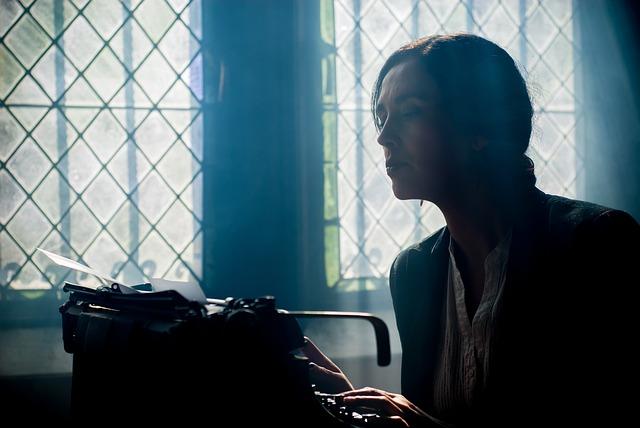In the dim glow of a writer’s study and the bustling energy of a director’s set, a unique alchemy unfolds—one that transforms mere ideas into captivating narratives. This collaboration between directors and writers is the heartbeat of storytelling, where imagination meets vision to create worlds that resonate with audiences. As the writer’s pen sketches the skeletal framework of a tale, the director breathes life into its veins, shaping characters and scenes with an artistic touch. Together, they navigate the delicate dance of creativity and practicality, crafting stories that linger in the minds of viewers long after the credits roll. This article delves into the intricate dynamics of this partnership, exploring how these creative forces unite to forge narratives that are as compelling as they are memorable.
The Art of Harmonizing Vision and Voice
In the realm of storytelling, the synergy between directors and writers is akin to a symphony, where each contributes their unique strengths to create a cohesive masterpiece. This partnership requires a delicate balance, with the director’s visual acumen complementing the writer’s narrative prowess. Together, they weave a tapestry of emotion and intrigue, transforming words on a page into vivid, immersive experiences. The process involves continuous dialogue, where each party respects and enhances the other’s vision, ensuring that the story resonates with authenticity and depth.
- Shared Vision: Establishing a common ground is crucial. Directors and writers must align on the story’s core themes and emotional beats.
- Open Communication: Regular discussions and feedback loops help refine ideas and ensure a unified narrative voice.
- Flexibility: Both parties should remain open to change, adapting as the story evolves from script to screen.
- Creative Respect: Honoring each other’s expertise fosters a collaborative environment where creativity thrives.
Ultimately, this collaboration is an art form in itself, where the fusion of vision and voice creates narratives that captivate audiences and linger in their memories.

Cultivating a Creative Dialogue
In the world of storytelling, the synergy between directors and writers is akin to a dance, where each step is crucial to crafting a narrative that resonates. This creative dialogue is not merely about exchanging ideas but building a shared vision. Directors bring their visual storytelling expertise, shaping how the narrative unfolds on screen, while writers infuse the story with depth and dialogue. Together, they navigate the complexities of character development, plot pacing, and thematic elements.
- Open Communication: Encourages an environment where ideas can flow freely.
- Mutual Respect: Recognizes the unique contributions each brings to the table.
- Creative Flexibility: Allows for adaptations and changes that enhance the story.
- Collaborative Brainstorming: Generates innovative solutions to narrative challenges.
This partnership thrives on a foundation of trust and shared goals, transforming individual creativity into a collective masterpiece that captivates audiences. By embracing their respective roles while fostering an environment of collaboration, directors and writers create a harmonious blend that elevates the storytelling process.

Building Trust for Narrative Brilliance
In the realm of cinematic storytelling, the synergy between directors and writers is pivotal. This collaboration is not merely transactional; it is a delicate dance of creativity and trust. Directors and writers must cultivate an environment where ideas can flow freely and constructively. This involves several key practices:
- Open Communication: Regular dialogue ensures that both parties are aligned in vision and purpose. This helps in addressing potential conflicts and refining the narrative.
- Respect for Each Other’s Craft: Recognizing the unique skills each brings to the table fosters mutual respect and enhances the storytelling process.
- Feedback and Flexibility: Constructive feedback loops allow for narrative adjustments that benefit the story, while flexibility encourages adaptation and innovation.
By prioritizing these elements, directors and writers can create a foundation of trust, paving the way for narratives that captivate and resonate with audiences. Such collaboration transforms mere scripts into cinematic masterpieces.
Practical Strategies for Dynamic Storytelling
In the art of crafting captivating narratives, the synergy between directors and writers is paramount. This partnership thrives on open communication and mutual respect, allowing both parties to explore creative possibilities and push boundaries. Directors bring a visual and emotional lens to the script, while writers provide the foundational story and dialogue. By integrating these perspectives, the narrative becomes a living, breathing entity that evolves through collaboration.
- Brainstorm Together: Regular brainstorming sessions can spark new ideas and ensure both vision and narrative are aligned.
- Embrace Flexibility: Encourage adaptability in the script to accommodate directorial insights that enhance storytelling.
- Shared Vision: Establish a unified vision from the outset, balancing the writer’s narrative arc with the director’s visual storytelling.
- Feedback Loop: Create a continuous feedback loop where both parties can critique and refine the narrative elements.
By fostering a collaborative environment, directors and writers can create dynamic stories that resonate with audiences, making each narrative a unique and engaging experience.

